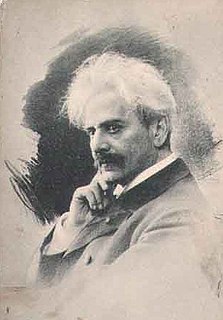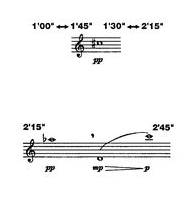Etudes Boreales is a set of etudes for cello and/or piano composed by John Cage in 1978. The set is a small counterpart to Cage's other etude collections - Etudes Australes for piano and Freeman Etudes for violin.

The cello ( CHEL-oh; plural cellos or celli) or violoncello ( VY-ə-lən-CHEL-oh; Italian pronunciation: [vjolonˈtʃɛllo]) is a string instrument. It is played by bowing or plucking its four strings, which are usually tuned in perfect fifths an octave lower than the viola: from low to high, C2, G2, D3 and A3. It is the bass member of the violin family, which also includes the violin, viola and the double bass, which doubles the bass line an octave lower than the cello in much of the orchestral repertoire. After the double bass, it is the second-largest and second lowest (in pitch) bowed string instrument in the modern symphony orchestra. The cello is used as a solo instrument, as well as in chamber music ensembles (e.g., string quartet), string orchestras, as a member of the string section of symphony orchestras, most modern Chinese orchestras, and some types of rock bands.

The piano is an acoustic, stringed musical instrument invented in Italy by Bartolomeo Cristofori around the year 1700, in which the strings are struck by hammers. It is played using a keyboard, which is a row of keys that the performer presses down or strikes with the fingers and thumbs of both hands to cause the hammers to strike the strings.

John Milton Cage Jr. was an American composer, music theorist, artist, and philosopher. A pioneer of indeterminacy in music, electroacoustic music, and non-standard use of musical instruments, Cage was one of the leading figures of the post-war avant-garde. Critics have lauded him as one of the most influential composers of the 20th century. He was also instrumental in the development of modern dance, mostly through his association with choreographer Merce Cunningham, who was also Cage's romantic partner for most of their lives.
Etudes Boreales were composed for, and dedicated to, Jack and Jeanne Kirstein. The latter performed Cage's piano works in the 1970s, but found Etudes Boreales unplayable; the first performer to find a way to play the pieces was percussionist Michael Pugliese (Pritchett, 199).
The set comprises four pieces. The cello parts are technically similar to Freeman Etudes: they are extremely demanding pieces composed using chance operations, every aspect of the work meticulously detailed in the score. The difference between the works is that in Etudes Boreales the pitch range is limited at any given time, and changes throughout the pieces, whereas in Freeman Etudes the range was unlimited. An excerpt from one of the etudes shows that the technique required involves the ability to jump accurately to any point on the fingerboard or beyond, which is particularly difficult in these pieces as they are to be played without vibrato (Stowell, 221):
The fingerboard is an important component of most stringed instruments. It is a thin, long strip of material, usually wood, that is laminated to the front of the neck of an instrument. The strings run over the fingerboard, between the nut and bridge. To play the instrument, a musician presses strings down to the fingerboard to change the vibrating length, changing the pitch. This is called stopping the strings. Depending on the instrument and the style of music, the musician may pluck, strum or bow one or more strings with the hand that is not fretting the notes. On some instruments, notes can be sounded by the fretting hand alone, such as with hammer ons, an electric guitar technique.
Vibrato is a musical effect consisting of a regular, pulsating change of pitch. It is used to add expression to vocal and instrumental music. Vibrato is typically characterised in terms of two factors: the amount of pitch variation and the speed with which the pitch is varied.
The piano parts of Etudes Boreales were composed using star charts, as in Atlas Eclipticalis, Etudes Australes and Song Books (here Cage chose the maps of Atlas Boreales, an atlas of the northern sky by Antonín Bečvář, hence the title of the work). However, the charts were used not to determine actual pitches, as in those works, but to determine where on the piano the performer is to play (the keyboard, the frame, the strings, etc.). This effectively transforms the piano etudes into percussion works (Pritchett, 199).

A star chart or star map, also called a sky chart or sky map, is a map of the night sky. Astronomers divide these into grids to use them more easily. They are used to identify and locate constellations and astronomical objects such as stars, nebulae, and galaxies. They have been used for human navigation since time immemorial. Note that a star chart differs from an astronomical catalog, which is a listing or tabulation of astronomical objects for a particular purpose. Tools utilizing a star chart include the astrolabe and planisphere.

Antonín Bečvář was a Czech astronomer who was active in Slovakia. He was born in Stará Boleslav. Among his chief achievements is the foundation of the Skalnaté Pleso Observatory and the discovery of the comet C/1947 F2 (Bečvář). His lifelong illness led him to the High Tatras where he founded the observatory.
Cello and piano parts may be performed separately, as Etudes Boreales for cello or Etudes Boreales for piano, or simultaneously as duets, although they were composed independently.







